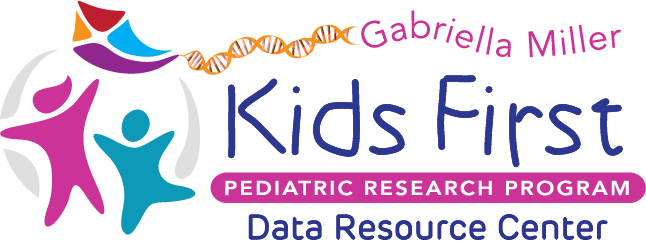With the development of next-generation sequencing technology, de novo
variants (DNVs) with deleterious effects can be identified and investigated
for their effects on birth defects such as congenital heart disease (CHD).
However, statistical power is still limited for such studies because of the
small sample size due to the high cost of recruiting and sequencing samples
and the low occurrence of DNVs. DNV analysis is further complicated by
genetic heterogeneity across diseased individuals. Therefore, it is
critical to jointly analyze DNVs with other types of genomic/biological
information to improve statistical power to identify genes associated with
birth defects. In this review, we discuss the general workflow, recent
developments in statistical methods, and future directions for DNV
analysis.
facebooktwitterLinkedIninstgramyoutubeFollow @kidsfirstdrc EMAIL KIDS FIRST Privacy Policy Cookies
The Kids First Data Resource Center (“DRC”) comprises partnered institutions supported by the NIH Common Fund under Award Number U2CHL138346 as part of the Common Fund’s Gabriella Miller Kids First Pediatric Research Program (“Kids First”). All content, terms and conditions and policies associated with the DRC Portal and Website (the “Services”) are produced by the DRC. The views and opinions of authors expressed on the Services do not necessarily state or reflect those of the National Institutes of Health (“NIH”) or the U.S. government. Furthermore, the NIH does not endorse or promote any DRC entity or any of its products or services nor guarantees the products, services, or information provided by the DRC.
© 2025 Gabriella Miller Kids First Data Resource Center. All rights reserved.
- About
- About
- Kids FirstA collaborative pediatric research effort, Kids First seeks to drive understanding of the genetic causes and links between childhood cancer and structural birth defects.
- CommunityA caring coalition of community foundations and childhood health nonprofits stands behind the continued success of the Kids First Data Resource Center.
- FAQsDiscover answers to common questions about the data, tools, and resources you can apply to empower childhood cancer and rare disease research.
- About Kids FirstKids First Data Resource Center enables researchers, clinicians, and patients to work together to accelerate research and promote new discoveries for children affected with cancer and congenital disorders.
- About
- Resources
- Portal
- DataAccess an extensive collection of quality genomic and clinical data harmonized by the Kids First Data Resource Center.
- ToolsCloud-based tools aid researchers in exploration, discovery, analysis, and study for a deeper understanding of childhood cancer and rare diseases.
- PublicationsRead about the tremendous strides made possible through valuable research contributions informed by Kids First data.
- StudiesEmpower your research through Kids First Data. Discover the robust collection of childhood cancer, congenital disorder, and cross-condition data available now.
- Help CenterGet your research started or move ahead with the help of the Kids First Data Resource Center.
- Portal LoginRegister or login to the Kids First Portal.
- ResourcesThese datasets are harmonized with best-practice open-source pipelines developed by the Kids First Data Resource Center team based on deep experience with pediatric data and community feedback.
- Portal
- News
- Language
- PORTAL LOGIN






